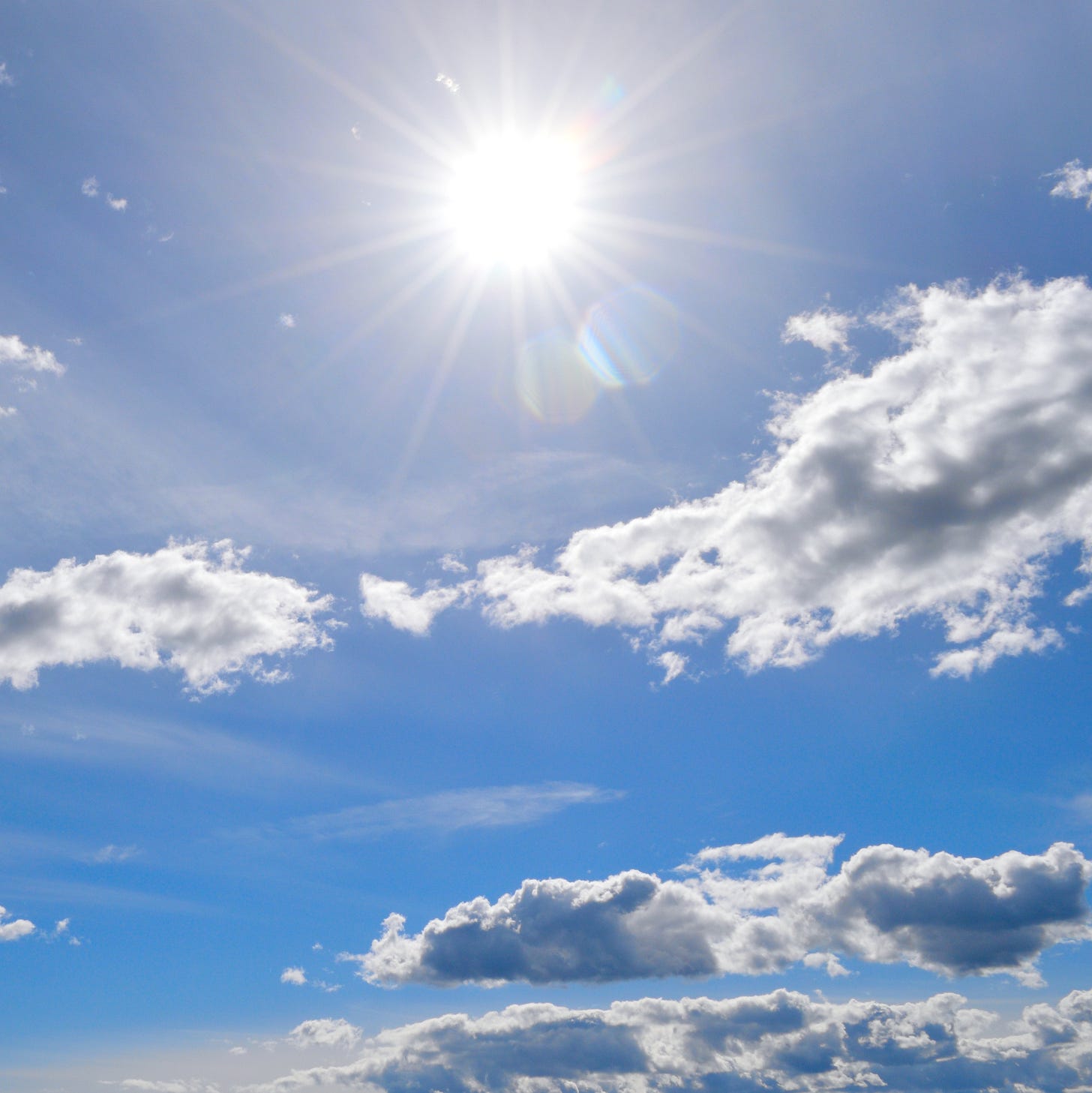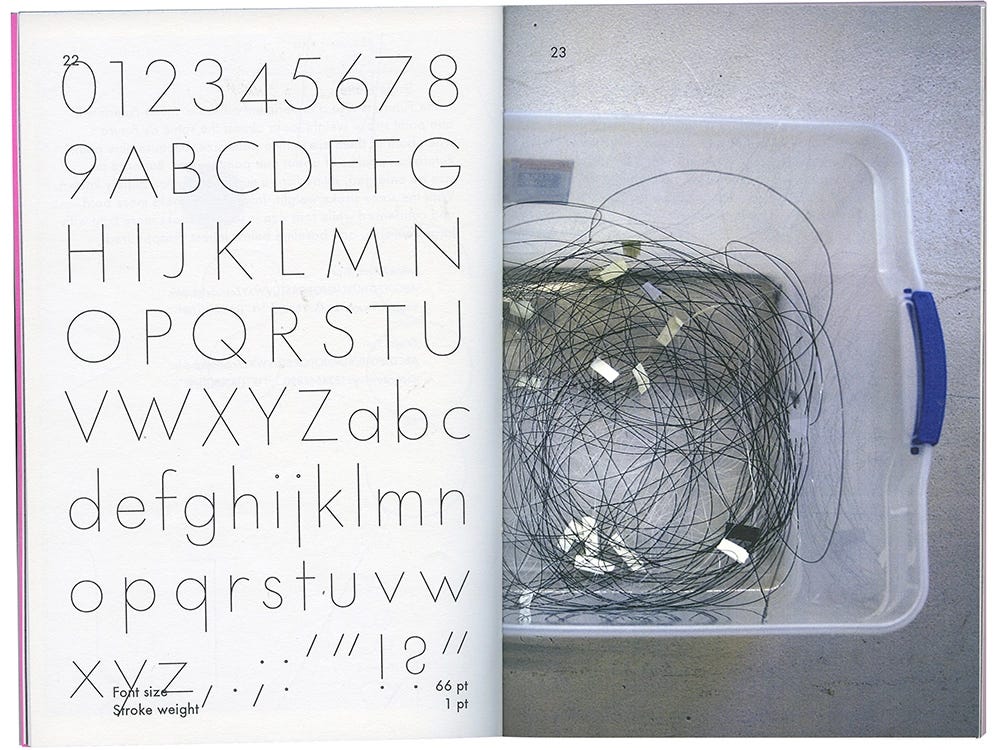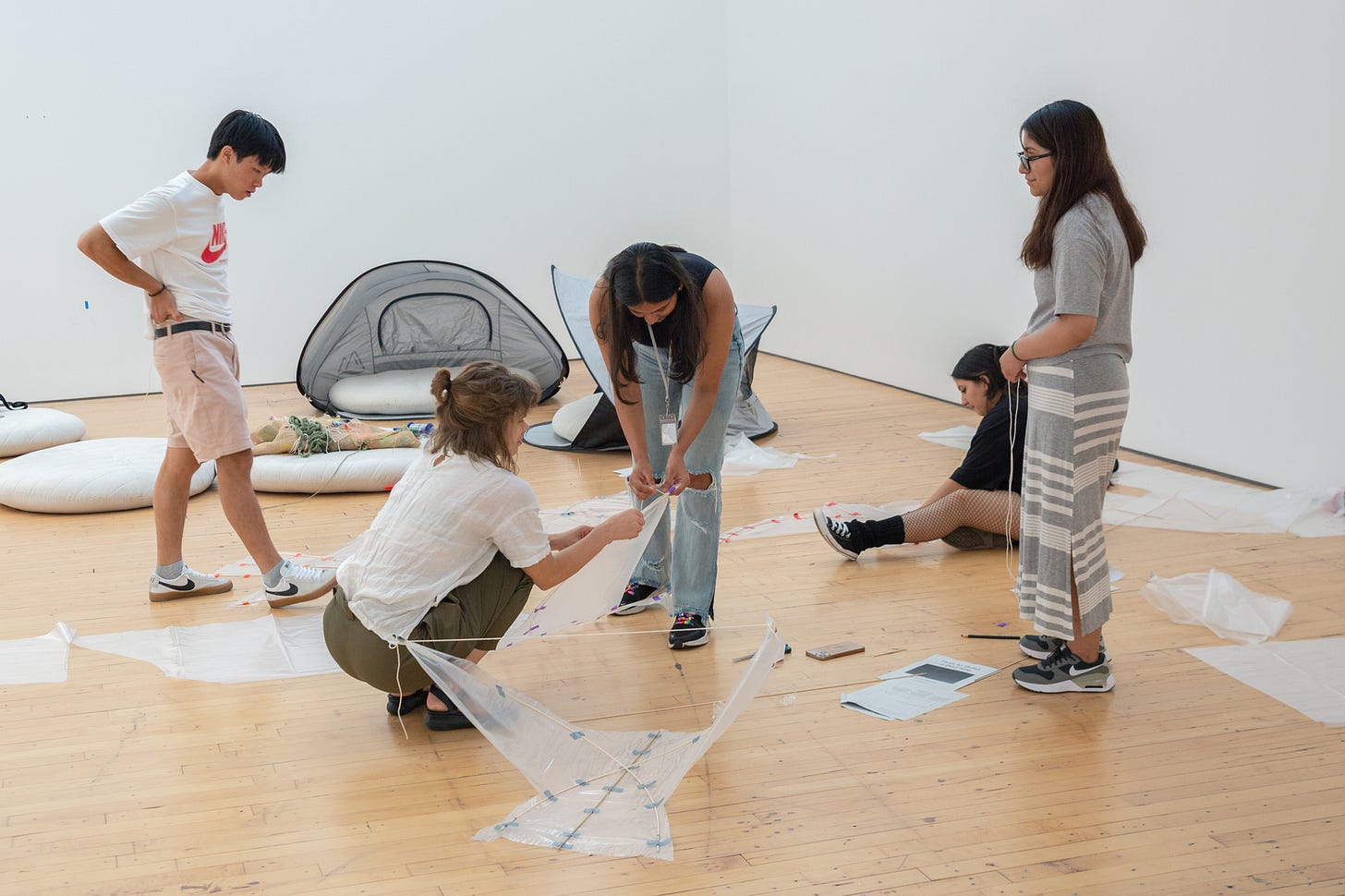A Flux Atlas by Robert Watts, 1973
Hi everyone,
Happy December! The winter solstice happens on Friday, December 22, 2023, 4:27 AM Central European Standard Time. This is a special time of year where it feels like winter, but it’s technically still “fall” …
What follows is a seasonal update from Laurel World. As usual, time has passed since our last update, in the depths of summer, when we wrote about becoming a system. Now, we’re keeping warm listening to Sade’s Stronger than Pride album (1988) and typing this letter to you. You can find archives of this newsletter at email.laurel.world.
Something timely … There is *one week left* to apply to our Ultralight Web Workshop taking place in January 2024, NYC. Do apply, if that’s your kind of thing, or feel free to share with others who might be interested …
Anyway, thank you for accompanying us on this journey …
In this letter:
Ultralight
I’ve been speaking, writing, & teaching often …
My transmission continues!
1 of 3.
Ultralight
The word “ultralight” simply means “extremely lightweight” —
In the physical realm, examples include planes and kites. Some kites are so lightweight they can fly indoors, for instance. While some planes are so lightweight they’ve earned the title “microlight.” Or there’s the subreddit called r/Ultralight, dedicated to lightweight backpacking equipment to ideally make your journey less burdensome …

But what does “ultralight” mean for technology and the internet? At first, ideas around lightness or heaviness might not intuitively make sense because ethereal technology metaphors like “the cloud” often hide or downplay physical infrastructure. But in reality, the internet is a physical thing, connected by underwater submarine cables and served from data centers containing many literal computers worldwide. Our phones are made from rocks. All computing is physical computing.
Relatedly, in The Internet’s Back-to-the-Land Movement, Becca Abbe shares:
“There is no cloud, it’s just someone else’s computer.” And that someone else is likely Amazon, Google, Facebook or Apple, whose data centers use real resources and take up acres of space around the globe.
But how can we feel the physicality of the internet if it’s so intentionally obscured?
After one year of running nearly all their phone and computer charge off a solar panel, artist Austin Wade Smith reported back:
“I’m convinced you can feel the environment in your phone if you use the limited availability of sunlight charge as a tangible constraint in internet consumption.”
They continued:
“The web needs to rise and set. Buttons revealed on the eclipse. Tickets available at high tide. Posts only possible when it’s raining. Turns out the world always already was an internet, and websites are just kites …”
Websites, which make up some of the internet, can also be lightweight. From a pragmatic standpoint, light websites have a usefulness — they are quick to load, often accessible by default, and use less energy and resources which can have an impact on the environment. (If you search for “lightweight websites,” you may come across collections of websites that are small or even smaller in file size, with few dependencies.)

Some websites, like Low Tech Magazine’s solar-powered one, take this a step further, directly linking their lightweight website to limited (but still relatively abundant) physical resources, like the sunshine in Barcelona:
“Low-tech Magazine was born in 2007 and has seen minimal changes ever since. Because a website redesign was long overdue — and because we try to practice what we preach — we decided to build a low-tech, self-hosted, and solar-powered version of Low-tech Magazine. The new blog is designed to radically reduce the energy use associated with accessing our content.”
Websites can be lightweight in metaphorical ways, too. Perhaps it’s about seeing the world in a new way. Maybe Italo Calvino, in the chapter on “Lightness” from his book Six Memos for the Next Millennium (1988), said it best —
“Whenever humanity seems condemned to heaviness, I think I should fly like Perseus into a different space. I don’t mean escaping into dreams or into the irrational. I mean that I have to change my approach, look at the world from a different perspective, with a different logic and with fresh methods of cognition and verification. The images of lightness that I seek should not fade away like dreams dissolved by the realities of present and future...”
This is not to say that heaviness does not also have its merits. It’s only to say that in the realm of ever-expanding technology, certain intentional limits enable life, sustainability, and accessibility.
One of our favorite aspects of “ultralight” is how it can encourage ultralight processes, too. What if a methodology, which might be inherently lightweight, is actually the focus instead? In reflecting on the beauty of a documentary about the first human-powered aircraft, the Gossamer Condor, Dan Michaelson shares that ultralight is a “minimum possible means to achieve an ambitious, even quixotic goal.” He continues:
“To start from nothing and make almost nothing. The dream of a perfect content management system, a blank slate, a design process that barely creates or destroys but merely deploys the engine of a discourse, with a little waste heat. Still, it should look like something, glimmer in the light.”
Artist Weiyi Li frames her entire practice as one of distillation, from her thesis book Four Hundred Forty Five Pieces of Lightness (2012):
“My work is about removing weight, like a cutter or a distiller. My job is thinning and squeezing things, making them thinner than onion skin and lighter than a feather. Sometimes I suspect that my work is still not light enough. A pixel on screen or a point on paper might still not be light enough. If I can make it lighter, I make it faster, until it becomes suspended ghost images. If I can not make it faster, I simply try to not make it happen, let it be an unspoken sentence staying on somebody's tongue, a gesture remaining motionless like a statue, an action waiting for consequences that will never happen. I keep thinking of a story I heard when I was a child: It was said that in Zhangzhou, China, a monk used a paint brush to draw plum flowers in the air every day. During his life, he never drew anything on paper at all. I always dream about doing something as light as the invisible plum flower he drew.”
Historically, design and art styles are largely a result of the limitations and powers of the technology available at that time. Today, we believe there are ways of making that have been lost in the quest to modernize everything. By creatively exploring websites with a maximum file size, or writing a text-only website that also works as an auditory reading, or programming a site so it’s only available at specific times, for instance, we may be able to create on the web in unique and possibly nourishing ways, for ourselves, our audiences, and our environments.
This is an expanded version of the text from my Ultralight Web Workshop, which will happen in January 2024 — applications still open! Special thanks to Meg Miller for helping edit an earlier version of this writing, and to Omar Rizwan for sending me the kite computer drawing from an IBM Thinkpad box, and to Austin Wade Smith for ongoing inspiration.
2 of 3.
I’ve been speaking, writing, & teaching often …
The “Ultralight” theme has been a useful umbrella for me lately …
Over the summer …
I gave two kite-making workshops for DIA Art Foundation, one at DIA Beacon and another at the Park Avenue Armory … more
I gave a talk called “Becoming Ultralight” and also began a generative collaboration in choreographing my kites to a carillon (church bells) performance, as part of the Interact Symposium … more, more
I gave a talk about “Eggs in Art in Design” in Copenhagen as part of Naive Yearly, about the poetic web … well, perhaps this isn’t *that* ultralight themed, but eggs and birds are certainly related … this talk will be published as a full essay in the new year … more
I wrote about the Kiki & Bouba phenomenon, with a fun quiz, for The New York Times. While this starts as abstract shapes, I love how the concepts of kiki and bouba can be extrapolated to other senses and ways of being … read
During the fall …
As it was beginning to turn to winter and started snowing, I lead an ultralight web workshop in Hamburg, Germany for students at the HFBK … more
I was interviewed by Min Guhong about “firsts” in my practice, which feels rather ultralight … it’s in Korean now, but feel free to translate to your language of choice using your web browser … read
This coming winter …
(In January), as I mentioned, I’m excited to lead a three week ultralight web workshop in NYC with special guests Marie Otuska (of Low-Tech Magazine) and Benjamin Earl (of “coding in situ” methodology) as fruitful.school … more
(In February), I’m giving a lecture and workshop at the University of Tennessee in February on these ultralight themes, too …
This forthcoming spring …
My course at Princeton will be influenced by all this, as well …
I never realized it before, but another project I orchestrated recently is rather ultralight … like in the way it began:
Cab: Alex, It's interesting you had “no idea what you were doing” when you started the channel. But you made the title, you made the description, and added a few beginning simple pleasures. You made the channel open. Those things allowed others to contribute, which they easily did. You set the stage, and the stage was set correctly.
Alex: The last few years, I've been feeling like an embodied conduit for creativity … Looking back now at the channel’s slow evolution over the past six years, I realize it’s incarnating itself through us rather than being a distinct creative endeavor created by any single individual … It’s simply something that just needed to come into being, so I started it. At this point, it’s beyond me. Or it’s always been beyond me.
*
With Alex Singh, many co-contributors, and designer Megan Pai — I helped publish A Catalogue of Simple Pleasures, an “unbound book” for the Are.na Gift Shop — which I direct and shopkeep. Essentially, we translated a popular and loved Are.na Channel into a deck of cards … Are.na in physical form.
*
Consciousness of self is the “gravity” that burdens the spirit; the surpassing of the consciousness of self is “grace,” or spiritual lightness.
3 of 3.
My transmission continues!
Last time I wrote … I mentioned “Another Day in the Dome” (my other newsletter I write to more frequently than this one) was beginning …
Madeline Young kindly reflected for the MOLD Gift Guide —
“‘Another Day in the Dome,’ is a transmission about circling back to truly move forward. Laurel Schwulst shares notes and thoughts from her personal archive every ~8 days, circling back through dreams and musings. It’s always a soft pleasure to receive her newsletter and be reminded of the quiet reflections we should always return to.”
Anyway, it’s something you can subscribe to, or it could make a nice gift …
From my dome to yours,
Laurel
This is Laurel’s “Letter” newsletter, which is seasonal in format.
You can experience its archives at email.laurel.world.
Thank you for receiving this transmission!














Thanks Laurel, this was lovely to read.